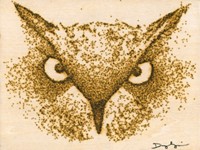Advertisement
Grab your lab coat. Let's get started
Welcome!
Welcome!
Create an account below to get 6 C&EN articles per month, receive newsletters and more - all free.
It seems this is your first time logging in online. Please enter the following information to continue.
As an ACS member you automatically get access to this site. All we need is few more details to create your reading experience.
Not you? Sign in with a different account.
Not you? Sign in with a different account.
ERROR 1
ERROR 1
ERROR 2
ERROR 2
ERROR 2
ERROR 2
ERROR 2
Password and Confirm password must match.
If you have an ACS member number, please enter it here so we can link this account to your membership. (optional)
ERROR 2
ACS values your privacy. By submitting your information, you are gaining access to C&EN and subscribing to our weekly newsletter. We use the information you provide to make your reading experience better, and we will never sell your data to third party members.
Physical Chemistry
Chemistry For The Sake Of Art
For one Long Island artist, her studio is her laboratory
by Ivan Amato
October 23, 2006
| A version of this story appeared in
Volume 84, Issue 43

Dispersed throughout Cheryl Safren's modest home in a dense residential neighborhood east of Queens on New York's Long Island are signs of intense chemical investigation.


Her basement looks like a laboratory. Hanging on one wall are goggles, a splash visor, and heavy-duty rubber gloves. What once was a bar now serves as a lab bench, hosting bottles and vials with liquids and solids in a rainbow of colors. On a table on another side of the basement rests a few ziplock plastic bags containing colored globs, the results of experiments with different polymer formulations to determine which ones hold together better. Nearby on the floor are scores of copper test strips the size of playing cards, each one subjected to a different chemical treatment.
Safren, who had worked since the 1970s as a graphic artist and then later as an art teacher, is a homegrown, self-taught applied chemist. Rather than making new medicines, commercial polymers, or semiconductors, her product line is fine art. On the walls of her living room, and in a growing number of public and corporate spaces, hang the visually stunning results of what she thinks of as proprietary art experiments. Her shows have names like "Chemistry on Copper" and "Percolations." The latter ran at the Great Neck Arts Center, in Great Neck, N.Y., this past spring.
"The results she was getting—the textures, patterning, and final composition—were stunning," says Regina Keller Gil, founder and director of the arts center. "The public was fascinated by it, and they wanted to know more," recalls Gil, noting that Safren wasn't willing to divulge too many details. Safren considers the treatments that she is developing to be trade secrets, which explains why she has developed an encryption scheme to keep track of them without inadvertently giving them away to, say, a visiting reporter. For example, the formula for one copper test plate reads "Bill + George + Marilyn." Each name refers to a chemical or process. Another plate reads "George + Daniel + Marilyn."
One of the works hanging in Safren's otherwise sparse, bone-white living room is an earthy-colored landscape titled "Stansbury Park," after a park west of Salt Lake City. From a distance, the imagery looks like an unusually colored landscape painting with representations of a snow-capped mountain, sky, water (reflecting the sky), and grass. "When you get closer, you realize that there is no paint on the surface whatsoever and that the whole thing is done with chemicals," Safren says. She uses acids to etch texture down into the metal sheet; gas-fueled torches and a variety of chemical treatments to modify the surface in ways that produce a spectrum of colors; and polymers, glass, and other materials to build up from the surface.
"My work, rendered without the use of any paint, allows chemistry to assume center stage," Safren explains in an artist's statement that she has distributed at her art shows. "Changing color through reaction, crystallization, fusing, and solidification are a few of the ways chemistry informs this work. Chemistry is sometimes the subject of my work, often its inspiration, and always the method or means of its creation."
In addition to hanging on the walls of her own home, Safren's works now are displayed in venues as diverse as the Tallyn Reach Public Library, in Aurora, Colo.; the Marine Biological Laboratory, in Woods Hole, Mass.; Wyeth Pharmaceutical headquarters, in Madison, N.J.; and the University of Georgia's School of Forestry.
Chemist Joachim Schummer, editor of the philosophy of chemistry journal Hyle, has written about Safren's work. As part of a special issue on "Aesthetics and Visualization in Chemistry," Schummer describes it this way:

"Safren uses chemical reactions on metal surfaces to create dynamic images. With these works, Safren brings to the fore the chemical materiality of painting and the intimacy of individual artists with their materials. Safren's 'paintings' interact with their viewers through the refractive and reflective nature of the chemicals applied to the surfaces."
This interactivity is particularly compelling. To take in the full effect of Safren's works, engaged viewers might find themselves moving from one side of the work to the other, and then squatting low before rising up on tippy-toes. Each change in the angle defined by the eye, artwork, and light source changes the work's appearance. What's more, Safren notes, because her chemical treatments subtly change over time—for example, by picking up moisture on humid days—they, in a sense, evolve. In these ways, the appearance of the work is quite literally relative to space and time.

Safren's applied chemistry approach to art started in 2001 with her son's high school science project. The project he chose, and with which she assisted, centered on submerging copper metal strips in various household liquids—among them vinegar, lemon juice, hydrogen peroxide, and a salt solution—and observing what happened. "I found this to be fascinating," says Safren, noting that her son got an A and then moved on from science into film-making and other pursuits. "But I became curious to see what happened when you used other chemicals and not just household things," she says.
In time, she began experimenting with various oxidizing chemicals and corrosives, beginning to tread into chemistries not usually done in suburban settings like her Long Island home. She tapped into her chemical engineer second cousin to get some tips on safety. And she sometimes travels to a more spacious studio in upstate New York when she needs to work on a larger scale commissioned work. "It just evolved," says Safren. "Once I started, I couldn't stop."
Like any applied scientist, many of her experiments don't work out. But working with copper has a fail-safe component, Safren notes. "I can sell the copper as scrap. I can sell my mistakes." She remembers bringing a particularly large batch of failures to the scrap dealer. "He kept peeling off the twenties," Safren says with a thief's grin. What satisfies her way more than a pile of $20 bills, she says with a decided Long Island accent, is the thrill of applying her own chemical investigations to making art that itself celebrates chemistry.




Join the conversation
Contact the reporter
Submit a Letter to the Editor for publication
Engage with us on Twitter